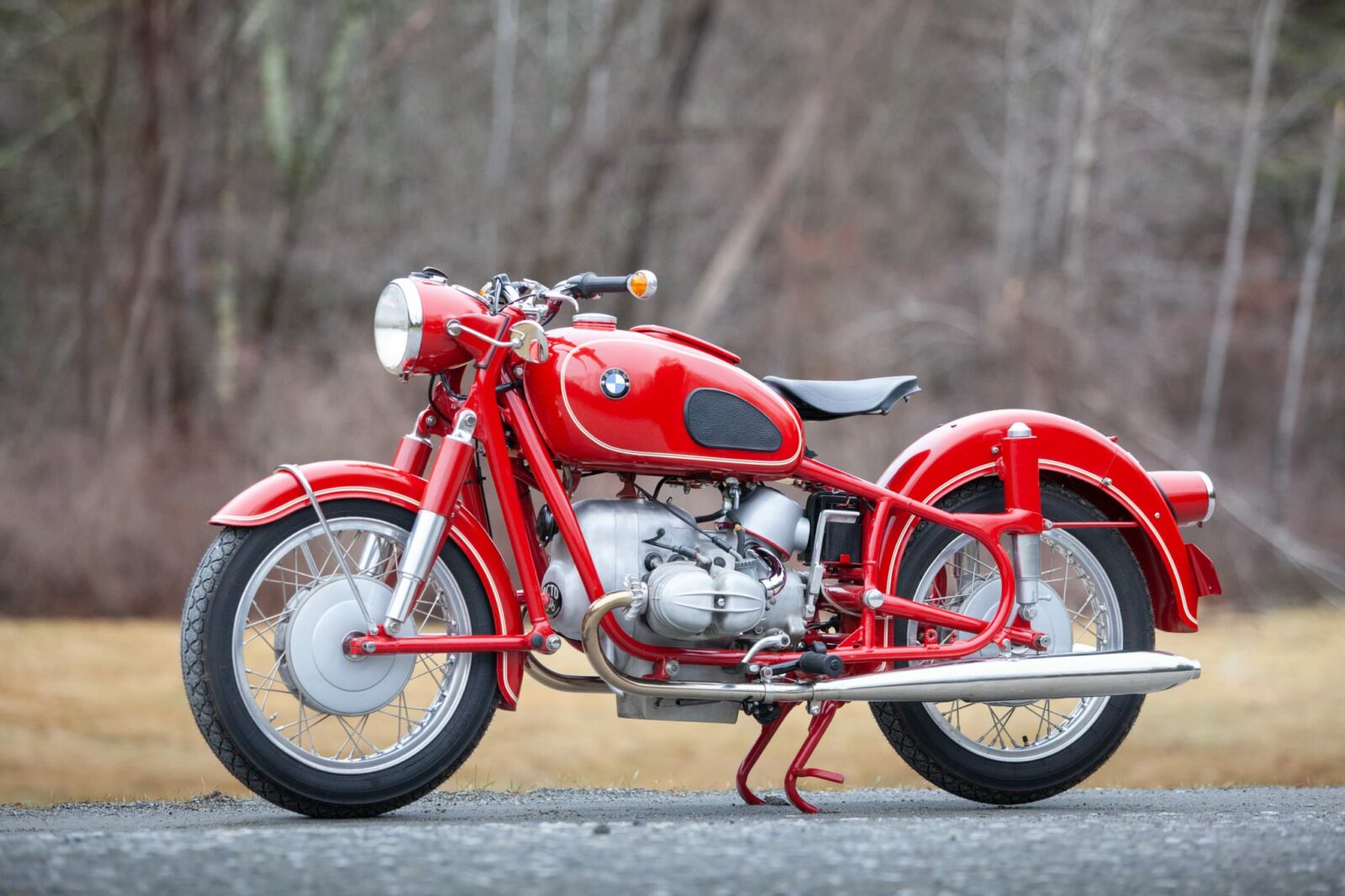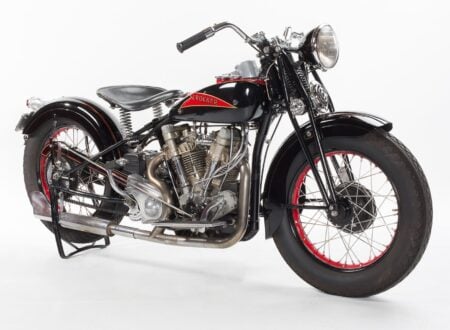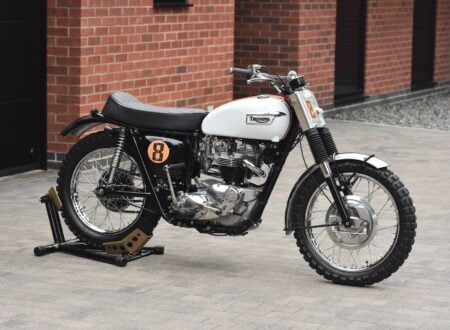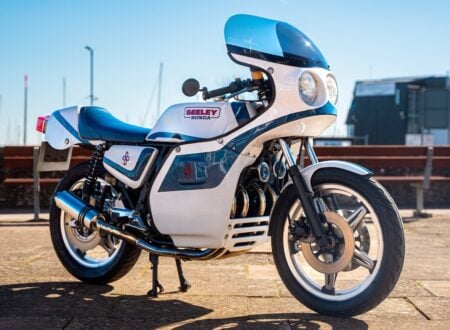The BMW R69S was one of the most desirable motorcycles of its age, for a certain clientele anyway, the kind of people who valued reliability and build quality over things like 0-60 mph times and top speeds.
With its unstoppable 594cc boxer flat twin and low-maintenance shaft drive to the rear wheel, the BMW R69 model family was costly but it offered riders an experience that was compared to Rolls-Royce or Mercedes ownership at the time.
Fast Facts – The BMW R69S
- The BMW R69S is a member of the R69 family that was sold by the German motorcycle manufacturer in three generations between 1955 and 1969. All R69 motorcycles had a very similar 594cc horizontally opposed boxer twin engine, a 4-speed gearbox, a tubular steel duplex cradle frame, and drum brakes front and rear.
- The BMW R69S was produced from 1960 until 1969 as a more sports oriented motorcycle. It had a relatively high compression ratio for the time of 9.5:1, markedly higher than the 7.5:1 of the earlier R69 (sans-S). It was good for 42 bhp at 7,000 rpm and had a claimed top speed of 109 mph (175 km/h).
- Though the 600cc size would be considered middleweight today it was generally considered a larger capacity motorcycle at the time of its release in 1960, most of the high-performance OHV British twins had a displacement of just 650cc.
- The BMW R69S was fitted with drum brakes front and rear, Earles fork front suspension and a swing arm in the rear with two hydraulic shock absorbers. When fully fueled the bike weighed in at 202 kilograms and it carried 17 liters of fuel.
Not Just The Wild Ones
Motorcyclists are often all lumped together by non-riders, often seen as reckless outlaws or high-speed daredevils, when the reality of the situation is almost invariably far less exciting and altogether more boring.
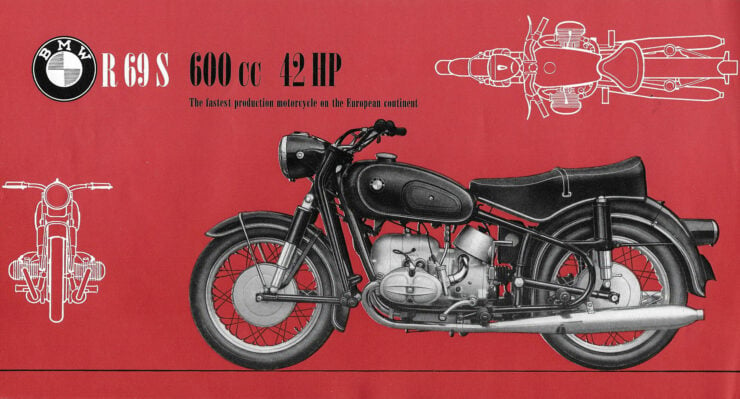

Marlon Brando’s character in the 1953 motorcycle outlaw film The Wild One set the public perception of motorcyclists as dangerous criminals, and the rise of the Hells Angels motorcycle club beginning six years before in 1948 would significantly add to the stereotype over the succeeding decades.
Of course, the fact of the matter is that the vast majority of motorcyclists were not dangerous outlaws then and they’re not dangerous outlaws now. Motorcycles tend to attract people because they’re a lot of fun, and for the economically-minded they can be a far cheaper way of getting around due to the lower costs of fuel, parking, and parts.
The BMW R69 series was targeted not at the outlaw class of motorcycles but at the oftentimes older riders who prioritized reliability, build quality, and exclusivity.
The Origins Of The BMW R69
BMW had always appealed to the more wealthy members of the two-wheeled community. It isn’t widely known but the company actually started out building aircraft engines in 1916, then after WWI when they were banned from the activity they switched to making motorcycles in 1923 – initially based on the Douglas opposed twin engine design from Britain.
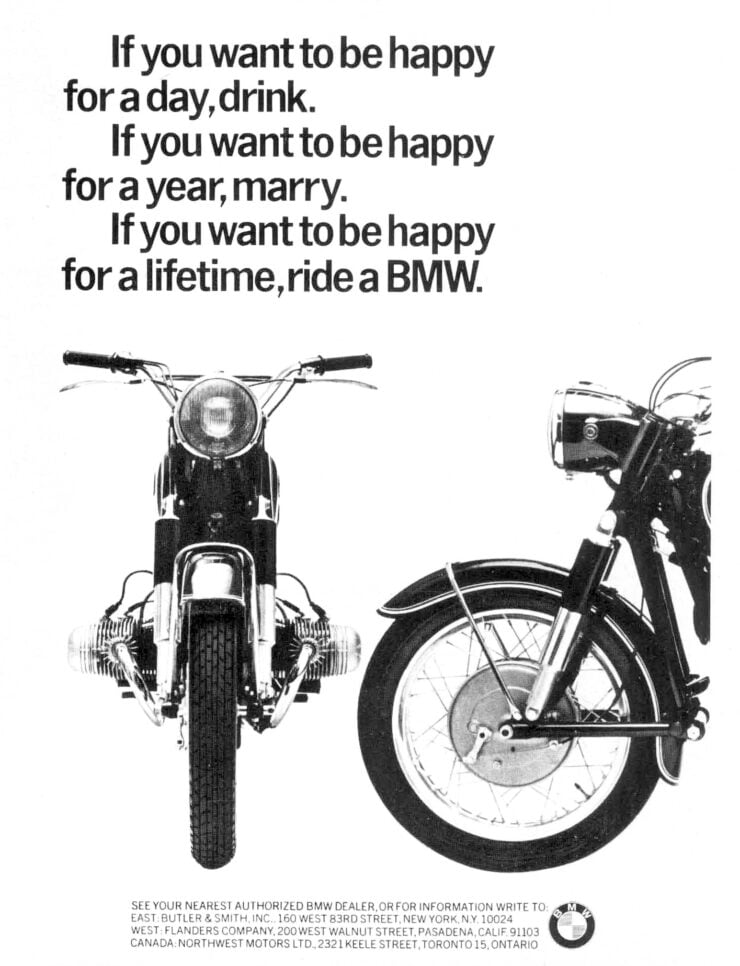

The horizontally opposed twin engines would carry BMW far and they remain in production with the company today, though now of course they’re entirely modern designs with overhead cams, electronic fuel injection, liquid-cooling, and complex onboard computer systems.
In the mid-20th century after WWII the first major motorcycle engine released by BMW was the M268, it was first shown to the world at the 1951 IFMA Motorcycle Show in Frankfurt.
The M268 borrowed heavily from BMW’s pre-WWII designs, it featured an alloy block, barrels, and heads, a pre-unit design with a 4-speed gearbox, and a shaft drive to the rear wheel. Variations of this engine would remain in production, in updated form, for decades.
The engine was first used on the BMW R68 and then on that model’s replacement from 1955 onwards – the BMW R69. The R69 had a modified tubular steel duplex frame and it did away with the plunger rear suspension of its predecessor which helped improve handling, though it retained the Earles fork front suspension which was deemed superior for sidecar use.
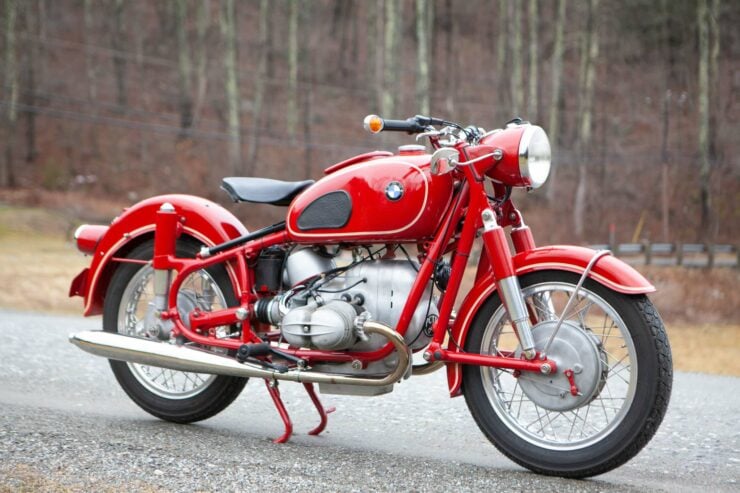

As was standard for the time there were drum brakes fitted front and back inside spoked 18 inch wheels under ample front and rear mud guards. Each cylinder had its own individual exhaust pipe and silencer, with no cross over pipe, and the exhaust was slung down under the cylinder to keep it out of the way.
Some off-road scrambler variants like the BMW R68 ISDT Special did have higher pipes fitted but these weren’t generally intended for normal street use.
Power from the air-cooled, horizontally-opposed boxer twin was sent back through a single plate clutch and a 4-speed gearbox to a shaft drive, and from there through a 90º bevel gear arrangement to the rear wheel.
When ordering your new BMW R69 you needed to specify whether you’d be using a sidecar with it or not, if you were then they would fit a final drive ratio of 1:4.33, solo riders got the 1:3.375 ratio which gave better performance given the lower total weight.
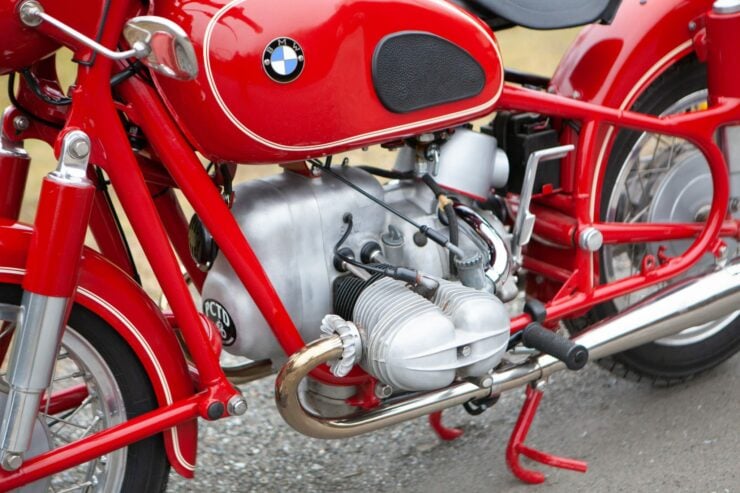

The BMW R69S Arrives
The BMW R69 would remain in production from 1955 to 1960 at which time the uprated BMW R69S was offered. There was also a BMW R69US model though it’s quite rare, it was given telescopic forks up front and was largely sold in the USA but only from 1968 to 1969 when the model line was replaced.
The engine used in the R69S was the 268/3, it included a number of minor changes over the 268/2 that was used in the original R69, perhaps the most notable change was the switch from a 7.5:1 compression ratio to 9:5:1, this helped increase power from 35 bhp to 42 bhp at 7,000 rpm and the top speed similarly increased from 103 to 109 mph.
Over the course of the 1960 to 1969 production run there were 11,317 examples of the BMW R69S sold and today they’re among the most collectible motorcycles from the era – so long as they have a matching numbers frame and engine of course.
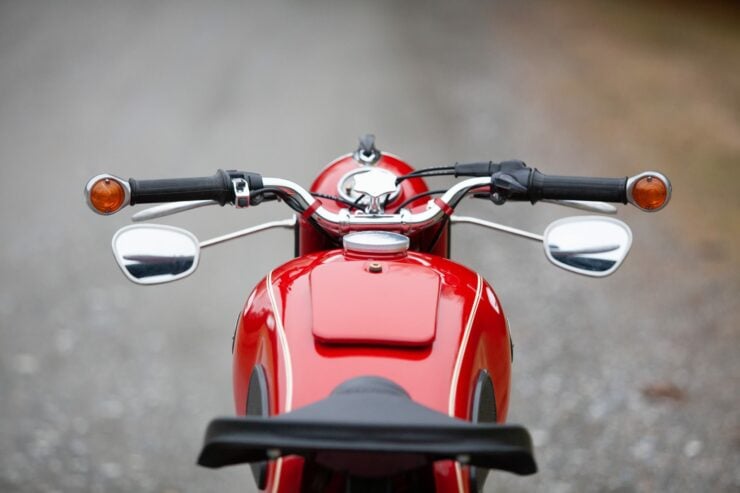

The 1964 BMW R69S Shown Here
The motorcycle you see here is a recently restored 1964 BMW R69S, it underwent a seven year restoration that was completed in 2019 and it was finished in eye-catching red paintwork with white pinstripes.
The restoration process was thorough and it included a full engine rebuild, a transmission and final drive rebuild, and a full refurbishment of the wheels, brakes, frame, suspension, and electrical systems.
The bike is now one of the nicest examples of the BMW R69S that we’ve seen in recent memory and it’s being offered for sale out of Great Barrington, Massachusetts with a Vermont registration in the seller’s name.
If you’d like to read more about it or register to bid you can visit the listing on Bring a Trailer here.
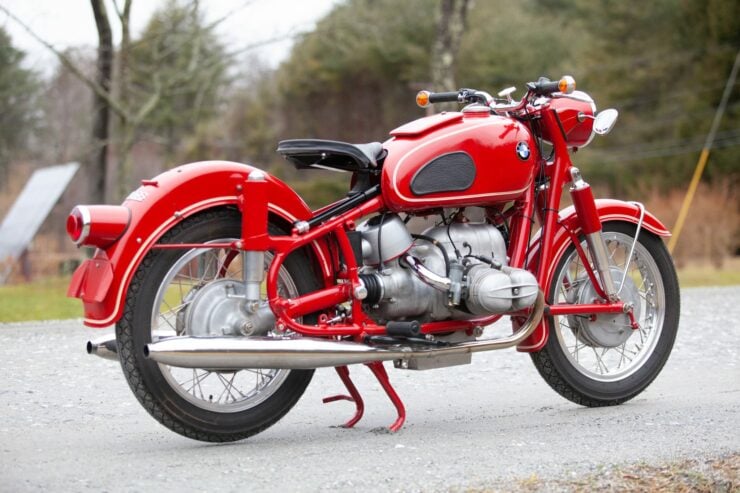
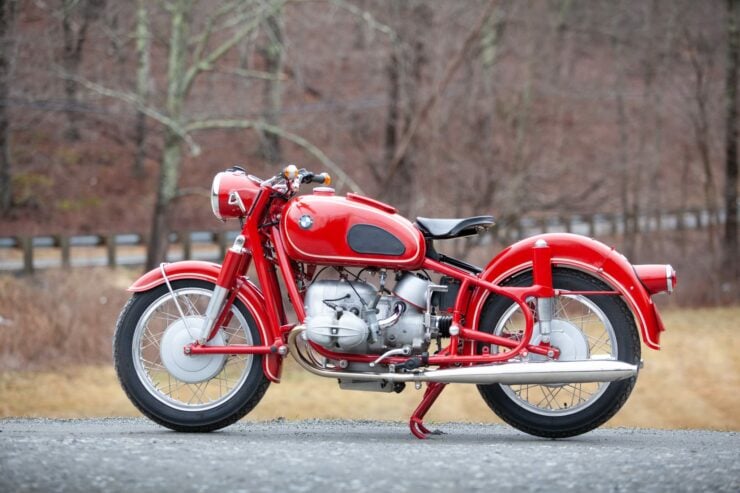
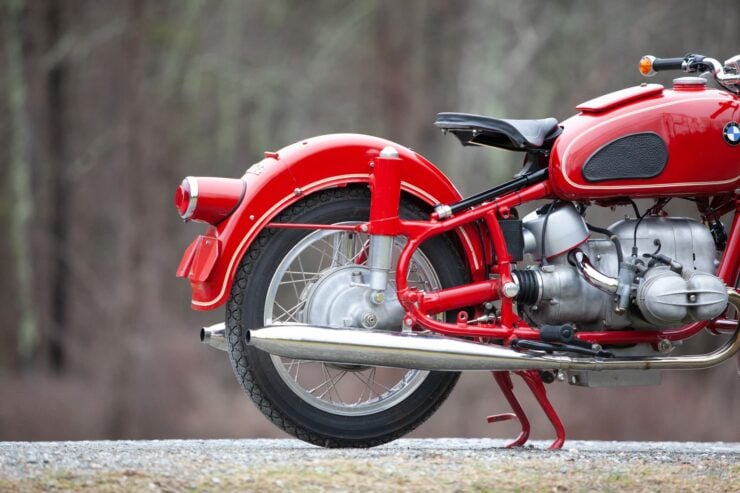
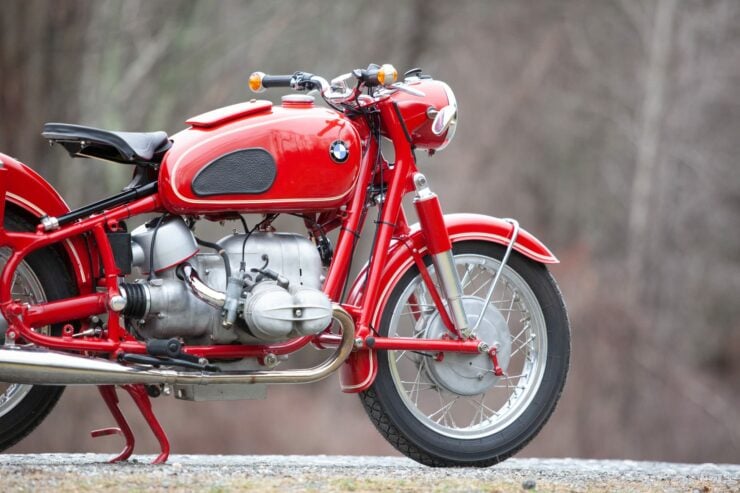
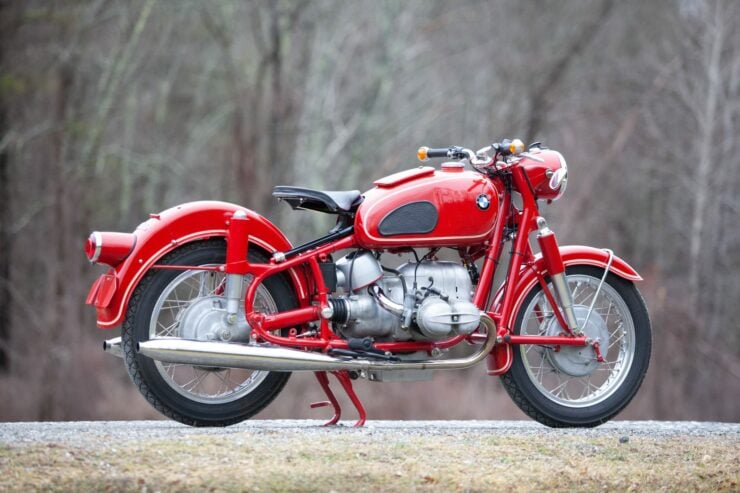
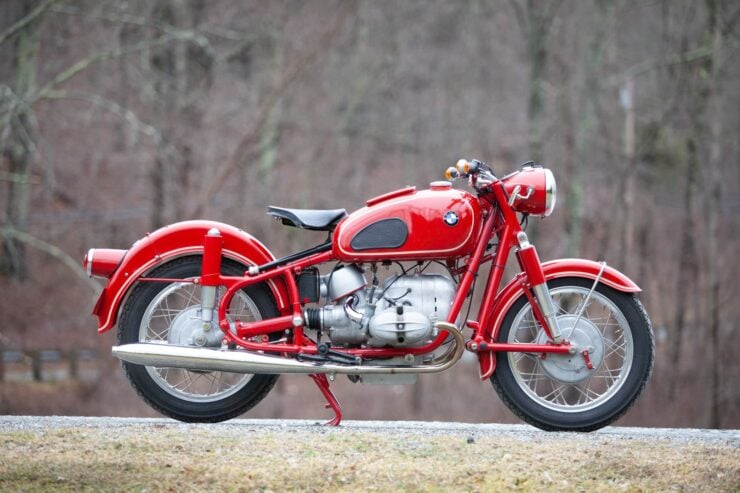
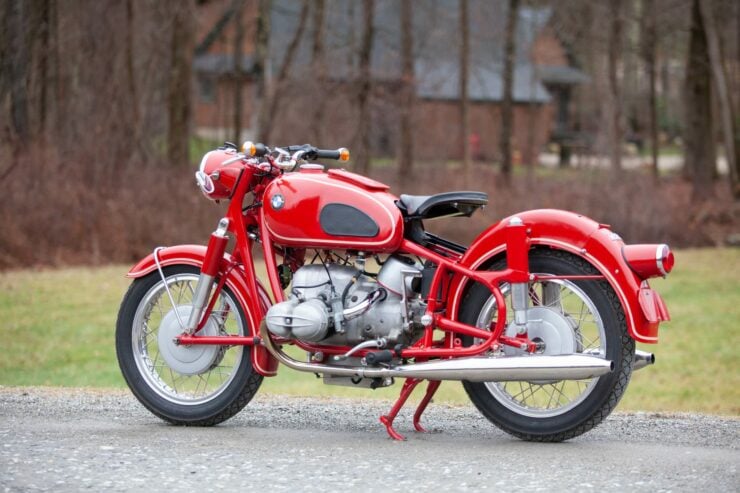

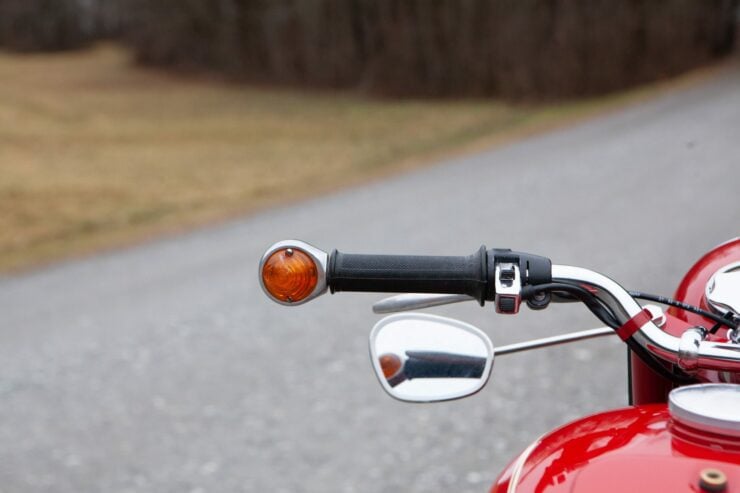
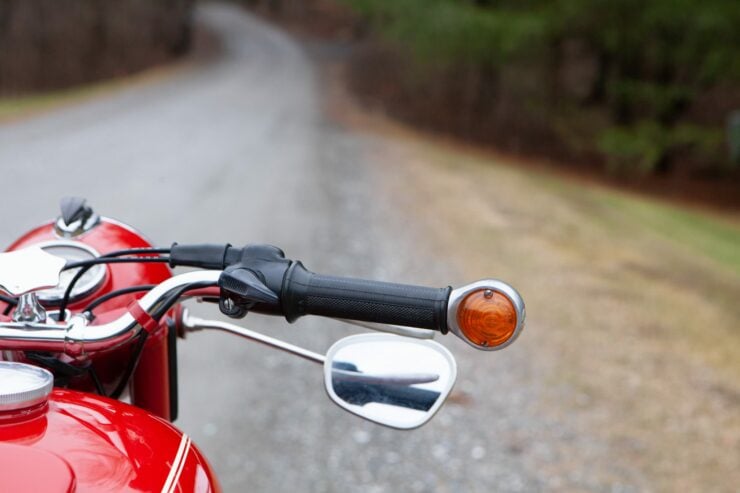
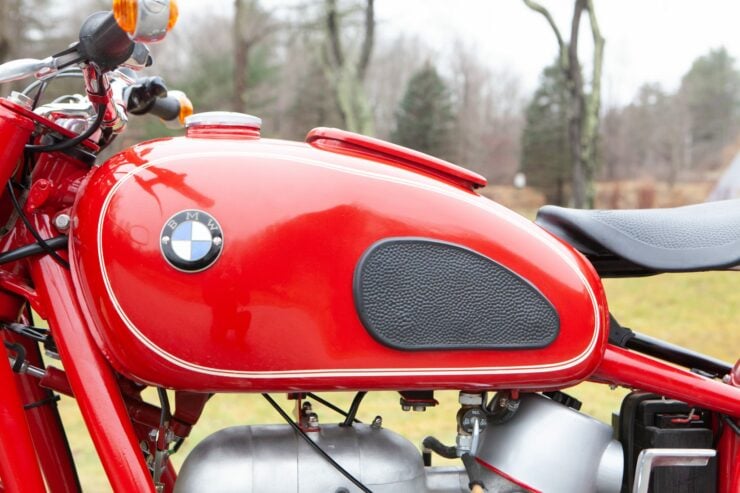
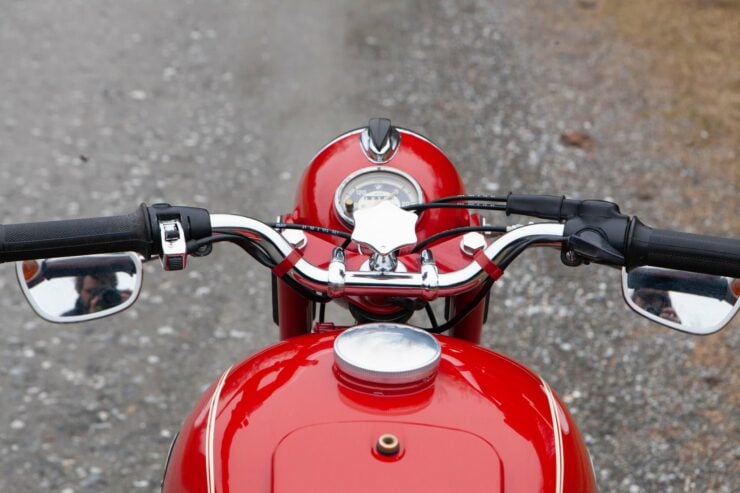
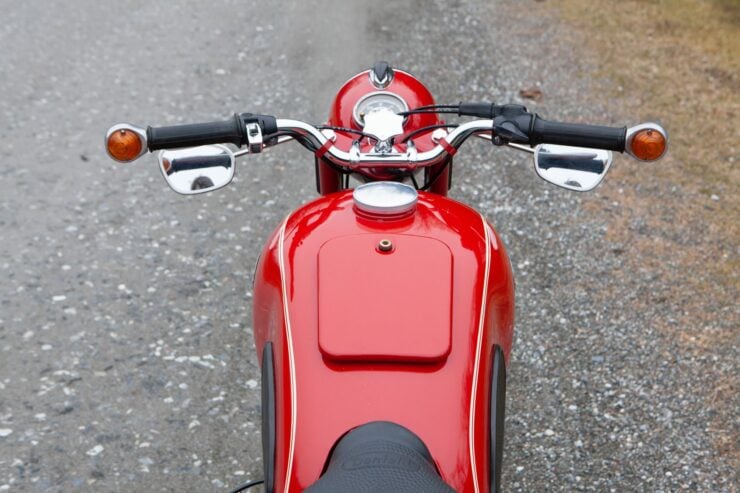
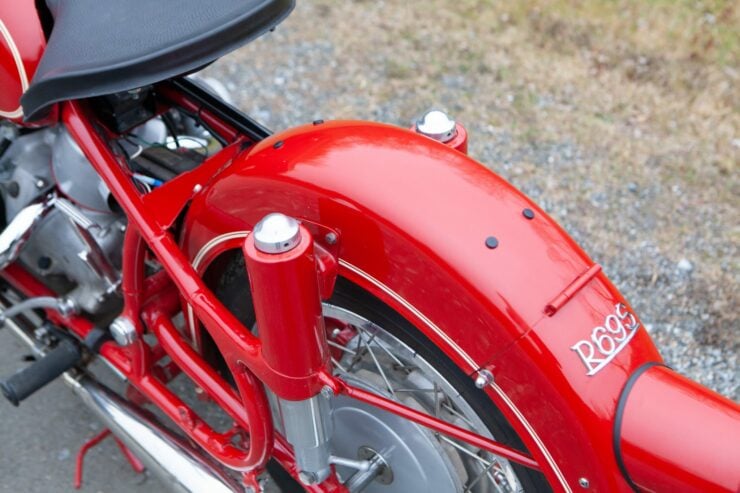
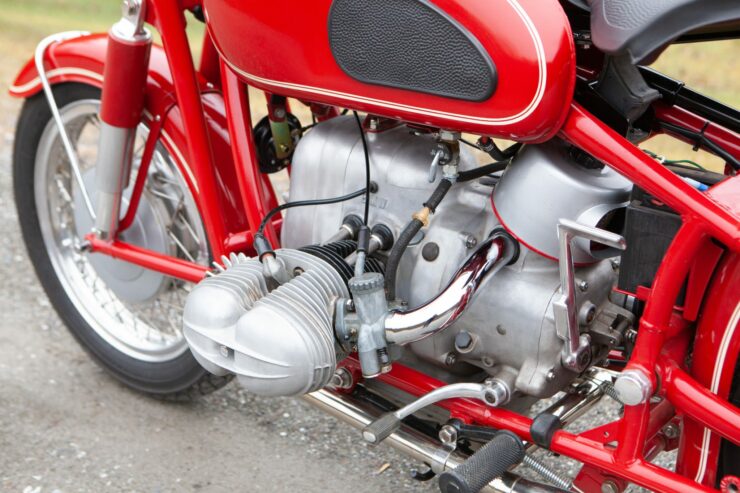
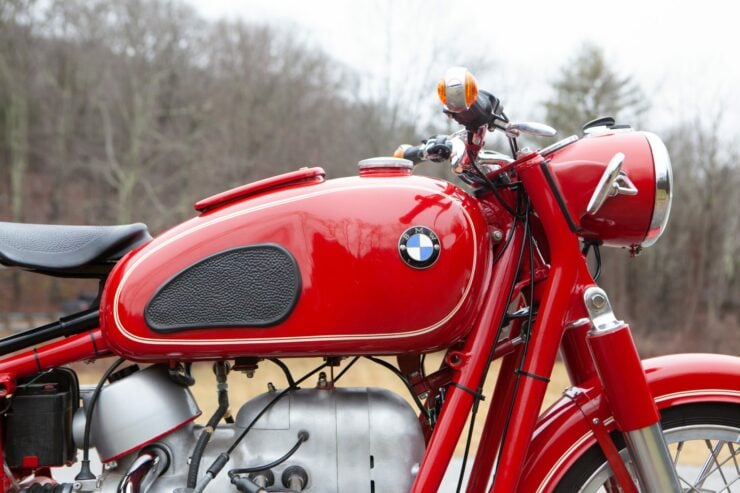
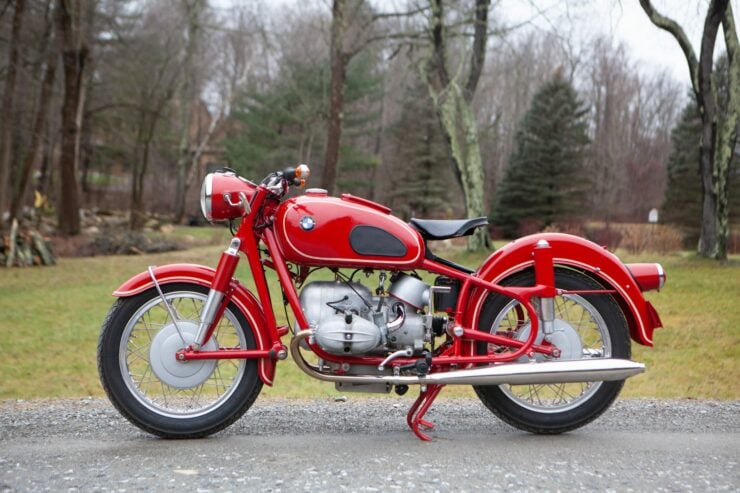
Images courtesy of Bring a Trailer

